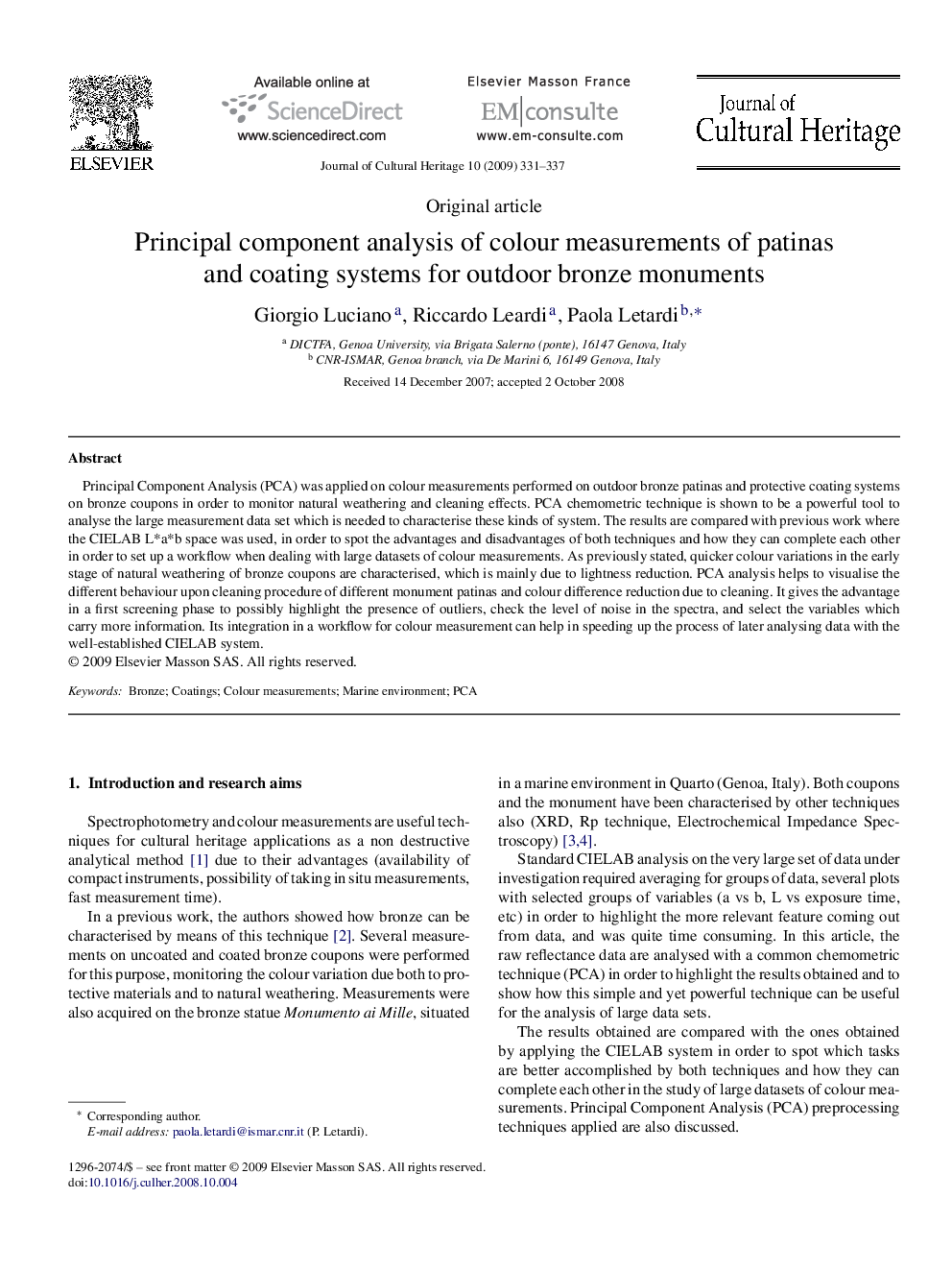| Article ID | Journal | Published Year | Pages | File Type |
|---|---|---|---|---|
| 1038576 | Journal of Cultural Heritage | 2009 | 7 Pages |
Principal Component Analysis (PCA) was applied on colour measurements performed on outdoor bronze patinas and protective coating systems on bronze coupons in order to monitor natural weathering and cleaning effects. PCA chemometric technique is shown to be a powerful tool to analyse the large measurement data set which is needed to characterise these kinds of system. The results are compared with previous work where the CIELAB L*a*b space was used, in order to spot the advantages and disadvantages of both techniques and how they can complete each other in order to set up a workflow when dealing with large datasets of colour measurements. As previously stated, quicker colour variations in the early stage of natural weathering of bronze coupons are characterised, which is mainly due to lightness reduction. PCA analysis helps to visualise the different behaviour upon cleaning procedure of different monument patinas and colour difference reduction due to cleaning. It gives the advantage in a first screening phase to possibly highlight the presence of outliers, check the level of noise in the spectra, and select the variables which carry more information. Its integration in a workflow for colour measurement can help in speeding up the process of later analysing data with the well-established CIELAB system.
